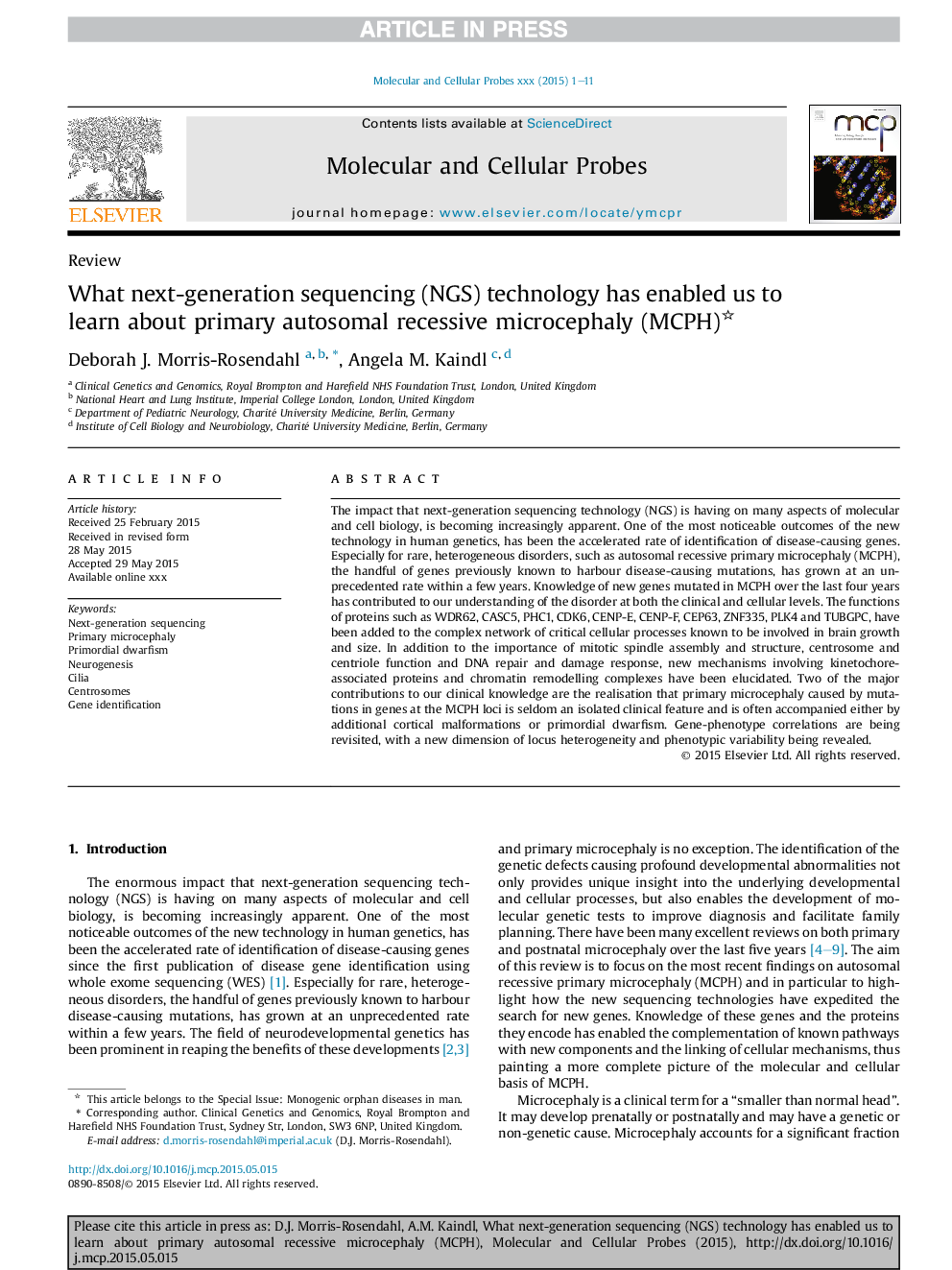| کد مقاله | کد نشریه | سال انتشار | مقاله انگلیسی | نسخه تمام متن |
|---|---|---|---|---|
| 10957710 | 1099611 | 2015 | 11 صفحه PDF | دانلود رایگان |
عنوان انگلیسی مقاله ISI
What next-generation sequencing (NGS) technology has enabled us to learn about primary autosomal recessive microcephaly (MCPH)
دانلود مقاله + سفارش ترجمه
دانلود مقاله ISI انگلیسی
رایگان برای ایرانیان
کلمات کلیدی
موضوعات مرتبط
علوم زیستی و بیوفناوری
بیوشیمی، ژنتیک و زیست شناسی مولکولی
بیولوژی سلول
پیش نمایش صفحه اول مقاله

چکیده انگلیسی
The impact that next-generation sequencing technology (NGS) is having on many aspects of molecular and cell biology, is becoming increasingly apparent. One of the most noticeable outcomes of the new technology in human genetics, has been the accelerated rate of identification of disease-causing genes. Especially for rare, heterogeneous disorders, such as autosomal recessive primary microcephaly (MCPH), the handful of genes previously known to harbour disease-causing mutations, has grown at an unprecedented rate within a few years. Knowledge of new genes mutated in MCPH over the last four years has contributed to our understanding of the disorder at both the clinical and cellular levels. The functions of proteins such as WDR62, CASC5, PHC1, CDK6, CENP-E, CENP-F, CEP63, ZNF335, PLK4 and TUBGPC, have been added to the complex network of critical cellular processes known to be involved in brain growth and size. In addition to the importance of mitotic spindle assembly and structure, centrosome and centriole function and DNA repair and damage response, new mechanisms involving kinetochore-associated proteins and chromatin remodelling complexes have been elucidated. Two of the major contributions to our clinical knowledge are the realisation that primary microcephaly caused by mutations in genes at the MCPH loci is seldom an isolated clinical feature and is often accompanied either by additional cortical malformations or primordial dwarfism. Gene-phenotype correlations are being revisited, with a new dimension of locus heterogeneity and phenotypic variability being revealed.
ناشر
Database: Elsevier - ScienceDirect (ساینس دایرکت)
Journal: Molecular and Cellular Probes - Volume 29, Issue 5, October 2015, Pages 271-281
Journal: Molecular and Cellular Probes - Volume 29, Issue 5, October 2015, Pages 271-281
نویسندگان
Deborah J. Morris-Rosendahl, Angela M. Kaindl,